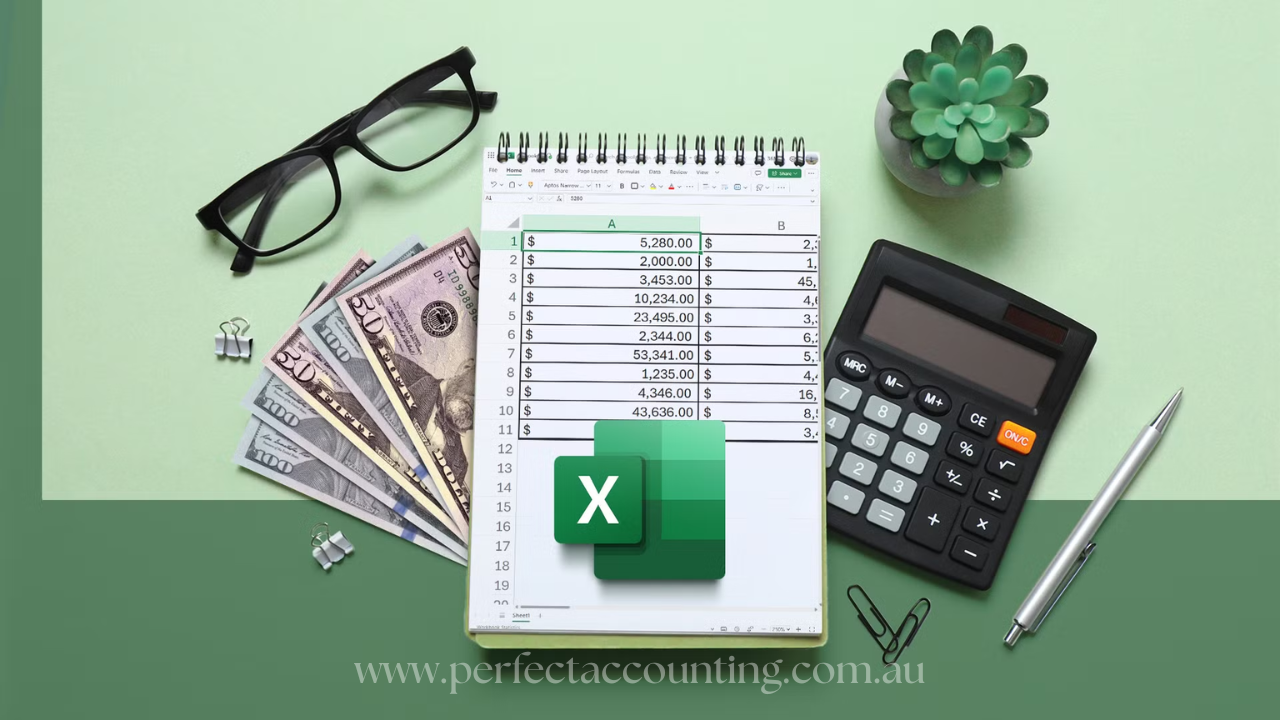Managing your business finances can feel overwhelming—especially when you’re not an accountant. But here’s the good news: Excel accounting is an affordable, user-friendly way to stay on top of your numbers, even if you’re not a math whiz.
Whether you’re a small business owner, a freelancer, or just trying to get your personal budget under control, Microsoft Excel gives you the tools to make accounting much simpler. In this guide, we’ll break everything down using plain English, give you some real-life examples, and walk you through step-by-step instructions so you can start today.
Why Use Excel for Accounting?
Let’s be honest—when most people hear “accounting,” they imagine stacks of paperwork or complicated software that only trained professionals can use. But that’s not always necessary.
With Excel accounting, you can:
-
Track income and expenses
-
Create financial reports
-
Manage invoices and payments
-
Reconcile bank statements
-
Monitor cash flow
In fact, many businesses start off using Excel spreadsheets before moving to more complex systems. It’s a great way to learn the basics of bookkeeping without the stress or the steep learning curve.
Anecdote:
Jane, a bakery owner from Melbourne, was drowning in receipts and had no idea if her business was actually making money. A friend showed her how to set up a basic income and expense spreadsheet in Excel. Within a few weeks, Jane could clearly see her profit margins—and she even found out she was undercharging for her cupcakes!
Step-by-Step: How to Set Up Excel Accounting
You don’t need to be an Excel expert to get started. Here’s a simple guide anyone can follow.
Step 1: Open a New Excel File
Start by opening a blank workbook in Microsoft Excel. Save it as “Business Accounts” or whatever name suits you.
Step 2: Set Up Your Categories
Use the first row for your headers. Common columns include:
-
Date
-
Description
-
Category (e.g., Rent, Utilities, Sales)
-
Income
-
Expense
-
Balance
Pro Tip: Use the drop-down list feature in Excel to select your categories easily.
Step 3: Enter Your Transactions
Start entering your daily or weekly transactions. For example:
| Date | Description | Category | Income | Expense | Balance |
|---|---|---|---|---|---|
| 2025-06-01 | Cupcake Sales | Sales | 500 | 500 | |
| 2025-06-02 | Ingredient Purchase | Supplies | 100 | 400 |
Use simple formulas to calculate the balance. For example, in column F, type:=F2 + D3 - E3 and copy down.
Step 4: Automate with Formulas
Here’s where Excel starts feeling magical. Use functions like:
-
=SUM()to total up your income or expenses -
=IF()to create simple logic rules -
=VLOOKUP()for referencing lists like customer names or account codes
Need a template to get started? Microsoft offers a variety of free templates for budgeting, invoicing, and even payroll.
Step 5: Create Financial Reports
Want to see how you’re doing month to month? Create a PivotTable to summarize your data. You can filter by date, category, or customer to see trends at a glance.
Common Use Cases of Excel in Accounting
-
Small Business Accounting: Track cash flow and generate basic reports.
-
Freelancers: Manage invoices and calculate profits.
-
Startups: Use as a budgeting tool before investing in full accounting software.
-
Personal Finance: Track bills, subscriptions, and spending habits.
Advantages of Using Excel for Accounting
-
Cost-Effective: No need to buy expensive software
-
Customizable: You can build your own system to fit your needs
-
Portable: Excel files are easy to share with your accountant or partners
-
Accessible: Most people already have access to Microsoft Excel
However, when your business starts to grow and you’re managing lots of data or facing tax season stress, it might be time to get professional help.
When to Upgrade from Excel to a Pro
If you’re handling payroll, inventory, or dealing with taxes and government reporting, Excel accounting may no longer cut it. That’s where experienced agents like Perfect Accounting PTY Ltd come in.
Anecdote:
Raj, a freelance designer, was using Excel for years to track his clients and payments. But when he got his first GST audit letter, panic set in. After contacting Perfect Accounting, they quickly cleaned up his books, filed the right paperwork, and gave him peace of mind. Now he uses Excel to track basic income but leaves the big stuff to the pros.
Tips to Make Your Excel Accounting Even Better
-
Back up regularly – Use cloud storage like OneDrive so you don’t lose important files.
-
Use conditional formatting – Highlight overdue invoices or high expenses.
-
Protect your sheets – Lock cells with formulas so you don’t accidentally delete them.
-
Use graphs – Visual charts can help you better understand your data trends.
Final Thoughts: Excel Accounting Works—But You’re Not Alone
Using Excel for accounting is a great first step toward understanding and managing your finances. It’s simple, effective, and best of all—you’re in control. But don’t feel like you have to do everything on your own.
If you’re feeling stuck, overwhelmed, or just want to save time, turn to the professionals. Perfect Accounting PTY Ltd has helped hundreds of Australian businesses get their books in order, understand their numbers, and grow with confidence.
Ready to Take the Next Step?
Start with Excel accounting today. And when you’re ready to go further, get in touch with the friendly team at Perfect Accounting. Let them handle the details while you focus on growing your business.
Visit www.perfectaccounting.com.au today to learn more.







